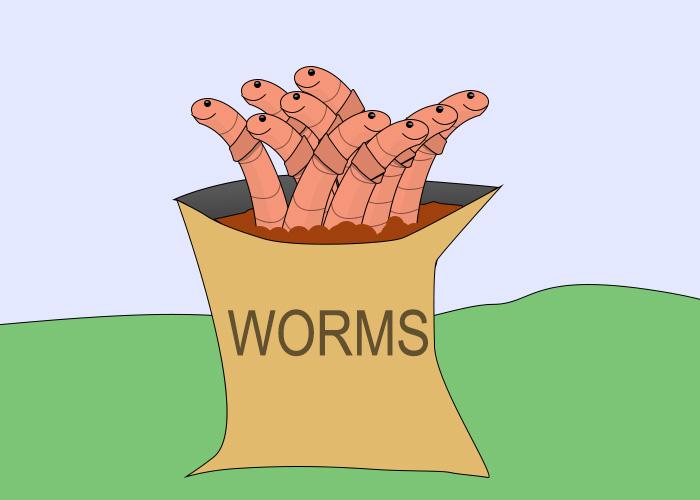Vermicomposting
Vermicomposting
(Making Good Use of Garbage!)
Worms can turn our old food into plant food. It's called vermicomposting.
The Littlest Worm Echo Song
Vermicomposting can be fun, but it is also good for our planet!
Worms are good for the Earth.
Worms are good for fishing.
Fun Worm Facts!
- Red worms may live up to 4.5 years in the Worm Wigwam (compared to 1 year in the wild), and will grow to a length of up to 3 inches.
- Red worms can live in a wide range of temperatures. They're happiest from 55-70 degrees, but can handle 45-80 degrees.
- Red worms are hermaphrodites—they have both male and female sexual organs—and reproduce quickly in confinement. Their population may double or triple in 1 year.
How Do You Vermicompost?
- Make a dark house for the worms to live in. A wooden or plastic bin or other non-metal container. A bin 1.5 feet high x 2 feet deep x 3 feet wide is a good size for a household. Make drain holes near the bottom.
- Fill the bin with moist bedding. Bedding can be paper or newspaper shredded, leaves, straw, peat moss, or sawdust. Make sure the bedding is kept very moist like a sponge. Change the bedding once or twice a year.
- Feed the worms.
- Yes! Fruit, vegetables, coffee grounds, bread, leaves.
- No! Milk, oil, eggs, meat, fat, dog or cat feces.
- Dig a hole in the bedding, dump the food in and cover it up with bedding. Pick a new spot each time you add food.
- Keep them damp and warm. Add water if the bedding feels dry, but make sure the excess water can drain away. Cover the bin with plastic or a tarp during freezing weather.
Worm Wigwam Pictures and More!
Play the Worm Maze game!
Help your worm find its way through the compost.

Other stuff you might like ...
Science & Scientists
What is science and who are scientists?



